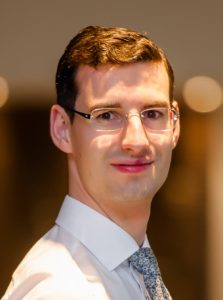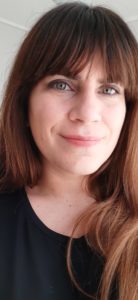You dip your teabag into a cup of boiling water and watch the clear steaming liquid slowly change into an inviting rich red. The laws by which the particles of tea spread from the source of high concentration (teabag) to the volume of low concentration (water in the cup) were explained elegantly in mathematical equations formulated in 1855 by Adolf Fick and are popularly known as Fick’s laws of diffusion.
However, biological activity is often predominant on surfaces, ranging from molecular motors and ciliary arrays that line our airpipes, to stationary and mobile creatures. These surfaces of ‘active carpets’ infuse energy into their surrounding environment generating a state of non-equilibrium.
Fick’s laws of diffusion are established near equilibrium. Transport at non-equilibrium, driven by fluctuations at interfaces, as is more common in biological systems such as at the junctions of tissue and tissue fluid and the linings of vessels and blood, have largely been unclear.
A collaborative study including physicists from the University of Pennsylvania, the University of Chile, and Heinrich Heine University at Düsseldorf, Germany, derives a new mathematical expression to explain the accelerated diffusion of particles as a function of distance from an active carpet in an article titled, “Active carpets drive non-equilibrium diffusion and enhanced molecular fluxes” published in the journal, Nature Communications.
This new extension of Fick’s laws of diffusion could explain non-equilibrium properties of active surfaces and life at interfaces. It provides a new theoretical framework with broad implications for biofilms, active coatings, and also mechanisms for pathogen clearance in the airways.
Specifically, this extended mathematical expression solves two problems.
First, through considering sedimentation towards an active carpet, the authors find a self-cleaning effect where changes driven by ‘active carpets’ can repel particles.
Second, through considering diffusion from a source to an active sink, for instance the movement of nutrient particles captured by suspension feeders, the authors establish the existence of a large molecular movement compared to diffusion due to heat.

“Fick’s laws describe the essential physics of diffusion. They proved to be instrumental for predicting transport processes in complex materials, even before the modern theory of Brownian motion. A remaining challenge, however, is to understand diffusion in systems that are driven out of equilibrium. This is especially important in biology and material science, where molecules are actively transported near surfaces. Therefore, we here extend Fick’s laws to understand diffusion near such active carpets. This work directly contributes to the development of active and adaptive materials,” says Arnold Mathijssen, DPhil, co-corresponding author on the study and Assistant Professor at the Department of Physics & Astronomy at the University of Pennsylvania.
Although diffusion is important in explaining the movement of biomolecules, it is inadequate to explain the movement of larger objects over long distances.

“That’s when you need active components to help transport things around,” says Mathijssen. In biological systems these active components that induce movement include cytoskeletal motors that move cargo vesicles in cells, or cilia that pump mucus out of human lungs. An array of such active components on a surface makes an active carpet. An active carpet enhances passive diffusion through the infusion of energy.
Mathijssen and his team studies the physics of pathogens He first became interested in this topic while studying biofilms with Francisca Guzmán-Lastra, PhD, an expert on the physics of active matter from the University of Chile, and theoretical physicist Hartmut Löwen, PhD, from the Heinrich Heine University in Düsseldorf, Germany.

Guzmán-Lastra says “In the microworld, the diffusion processes of molecules, nutrients or nonmotile particles are due to the Brownian movement of these [particles] or because they are ‘dragged’ by the ambient fluid. In this work we set out to study how the movement of different microorganisms that move in a plane can induce diffusion over the plane, even ‘very far’ from them. This is interesting as it allows you to understand that diffusive processes at the microscale are not “random.”
Biofilms are active carpets since they use their flagella to generate flows of liquid and nutrients in their environment. The researchers aimed to understand how biofilms sustain themselves when access to nutrients is restricted.
“They can increase their food uptake by creating flows, but this also costs energy. So, the question was: How much energy do you put in to get energy out?” says Mathijssen.
To answer this question the researchers needed to extend Fick’s laws because active carpets such as biofilms are systems that are not at equilibrium due to the addition of energy by the active components, flagellar movement in this instance.
“We thought that we could generalize these laws for enhanced diffusion, when you have systems that do not follow Fick’s laws but may still follow a simple formula that is widely applicable to many of these active systems,” says Mathijssen.
The researchers developed a model that describes the relationship between temperature and diffusion and found that microscopic fluctuations could explain the changes they saw in particle diffusion.
Using their new model, the researchers also found that the diffusion generated by these small movements is incredibly efficient, allowing bacteria to use just a small amount of energy to gain a large amount of food.

“We’ve now derived a theory that predicts the transport of molecules inside cells or close to active surfaces. My dream would be that these theories would be applied in different biophysical settings,” says Mathijssen.
His new research lab at Penn plan to study active diffusion both in biological and engineered microscopic systems in follow-up experiments.
Mathijssen is also involved in a project related to the spread of COVID-19 in food-processing facilities. Cilia lining our breathing tubes constitute an active carpet that serves as the first line of defense against pathogens like COVID-19. “That would be another very important thing to test,” he says, “whether this theory of active carpets may be linked to the theory of pathogen clearance in the airways.”



